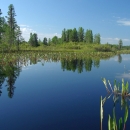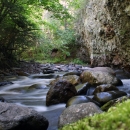What We Do
The U.S. Fish and Wildlife Service (Service) plays a vital role in conserving America’s natural resources by engaging public and private partners in conservation planning and delivery, and in the review of major development proposals.
We work collaboratively with other federal agencies, industries, stakeholders, as well as state and local governments, on development projects that accommodate bout our country’s infrastructure needs, and preserve our nation’s biological, terrestrial, and aquatic natural resources.
Today, there are 250 dedicated biologists in nearly 100 field offices across the country who work on the most pressing issues affecting our fish and wildlife. Our biologists provide technical information, analyze fish and wildlife impacts, serve as members of planning teams and recommend measures to benefit fish and wildlife resources across the landscape.
We recommend early consultation by project proponents and agencies to identify and recommend ways to avoid potential resource conflicts. We also provide technical assistance on how to minimize unavoidable impacts to wildlife and their habitats through appropriate project siting, design, construction, and operation.
Service biologists also provide information about species that may be affected by proposed development, sensitive or rare habitat in the area and sampling and monitoring protocols. If necessary, our biologists help develop compensatory mitigation plans and strategies.
Our goal is to implement innovative solutions to meet development needs, while maintaining ecosystem integrity and protecting fish and wildlife habitat.
Our Projects and Research
Our Laws and Regulations
National Environmental Policy Act
The National Environmental Policy Act (NEPA) of 1969 is one of the first and most significant pieces of environmental legislation enacted in the United States. The law provides the basic national charter for protection of the environment, and it is intended to ensure that information regarding environmental effects of an agency's development proposal and alternative actions are available to inform agency decision makers and the public.
The Service provides information for use in NEPA documents, and reviews and provides comments on these documents. Through this process, we seek to ensure that impacts to plant and animal resources are adequately described and necessary mitigation is provided. Our goal is to make better environmental decisions in a cost and time-efficient manner to further our mission to conserve, protect, and enhance fish, wildlife, plants and their habitats for the continuing benefit of the American people.




